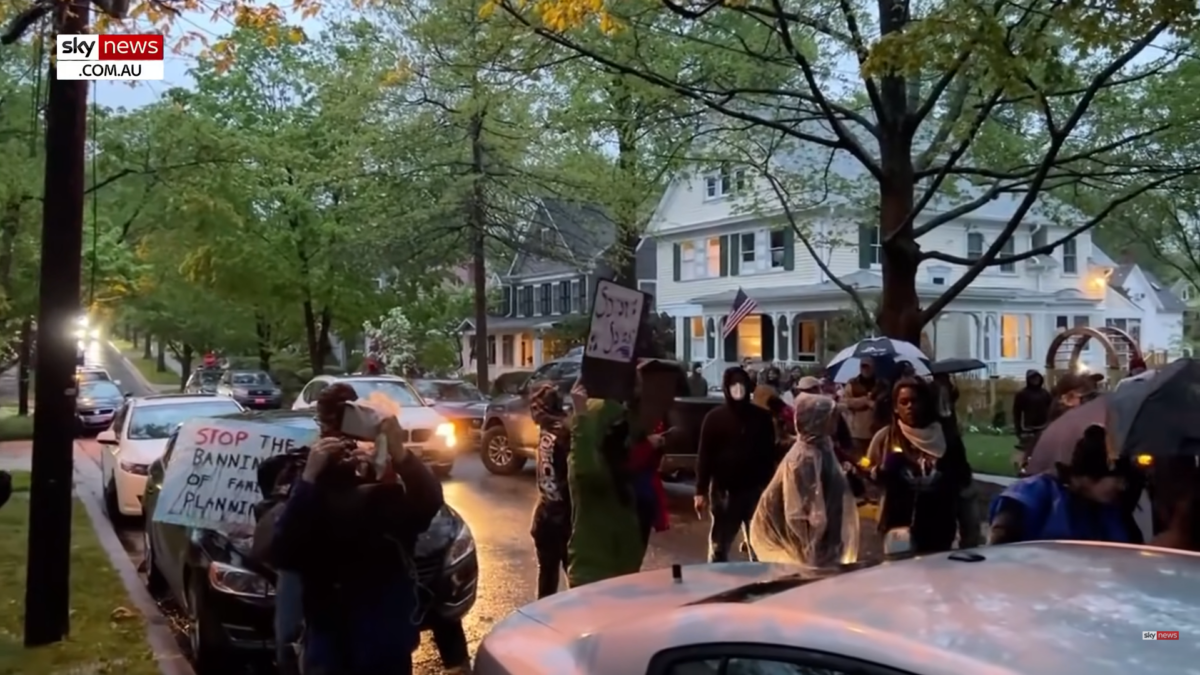Everyone is more or less familiar with the concept of broken windows policing. Theories vary on whether prosecuting minor crimes directly deters more serious crime (because criminals fear the severity of prosecution) or whether it is the fear and withdrawal of citizens from disordered communities that allows more serious crime to come in.
Either way, the theory can be summarized as follows: When law enforcement vigorously prosecutes minor crimes such as littering, loitering, and vandalism, the effect is less serious crime in the community. If you allow one broken window in a building, soon the other windows will be broken, and more severe crime will follow.
Now apply that principle to the current situation regarding the leaked draft of the United States Supreme Court’s decision in Dobbs v. Jackson Women’s Health. Once the draft opinion leaked and appeared to signal that Roe v. Wade and Planned Parenthood v. Casey would soon be overruled, the protests began. These protests included threats to storm and burn down the Supreme Court building, as well as protests outside the personal residences of Supreme Court justices who are likely to vote to overturn Roe.
The Constitution protects the right to free speech and free assembly, but there are legal limits that clearly apply here. Federal law is quite clear about pickets or parades that seek to interfere with the administration of justice or influence a judge in the administration of his duty. Such action is criminal, punishable by up to one year in prison. If the pickets were a peaceful assembly of people who support abortion in a public place, such as the Supreme Court building, this would be political activity protected by the First Amendment.
But the protesters are bringing their demonstrations to the front yards of Supreme Court justices’ private residences. They come in large numbers; they shout through bullhorns; they utter profanities. Since this is in response to a leaked draft of an opinion that the Supreme Court justices have not yet voted on, there is no conceivable intent of such behavior other than to influence the decision. This is a federal crime.
Federal crimes should be prosecuted by federal authorities. Attorney General Merrick Garland was silent about these protests at the justices’ homes when they began. Only recently has he condemned the threats of violence and vowed the Department of Justice would “do everything we can to prevent” violence against the Supreme Court justices. Doing everything they can apparently doesn’t include enforcing the directly applicable federal criminal law, since the DOJ has announced no investigations or arrests related to these intimidating protests.
Fast forward one month, and a radical shows up at Justice Brett Kavanaugh’s house with the admitted purpose of assassinating him. Like the protesters, the alleged attempted murderer stated his primary motive was anger about the impending reversal of Roe v. Wade as well as his opinion that Justice Kavanaugh would vote to loosen gun restrictions.
This is what happens when we refuse to enforce the law. Obviously, nobody can look back and say that if the protesters outside the justices’ homes were vigorously prosecuted, this man definitely would not have attempted to assassinate Justice Kavanaugh. But the broken windows theory is telling: Failing to enforce the law on “smaller” issues creates an atmosphere that fosters more serious crime.
If the Department of Justice announced it would relentlessly prosecute any protesters who intended to use intimidation tactics to affect the outcome of the Dobbs case, it would create an atmosphere of law and order — an atmosphere that might dissuade someone from traveling across the country to assassinate a sitting Supreme Court justice. By completely failing to enforce the law, law enforcement allowed a societal window to be broken.
As Rod Dreher recently wrote, we now live in a society full of broken windows, of “small but telling outward sign[s] of inner disorder.” The escalation of protests that led to the attempted murder of Justice Kavanaugh is one poignant example.
Each time we allow protests to turn into violent riots, each time we allow the law to be broken because those in power agree with the politics of the lawbreakers, we allow another window to be broken in our society. We send a message that disorder is acceptable. We must draw clearer lines and restore order in our society. If we don’t clean up the graffiti and broken windows of lawlessness, we should expect the disorder to escalate.








